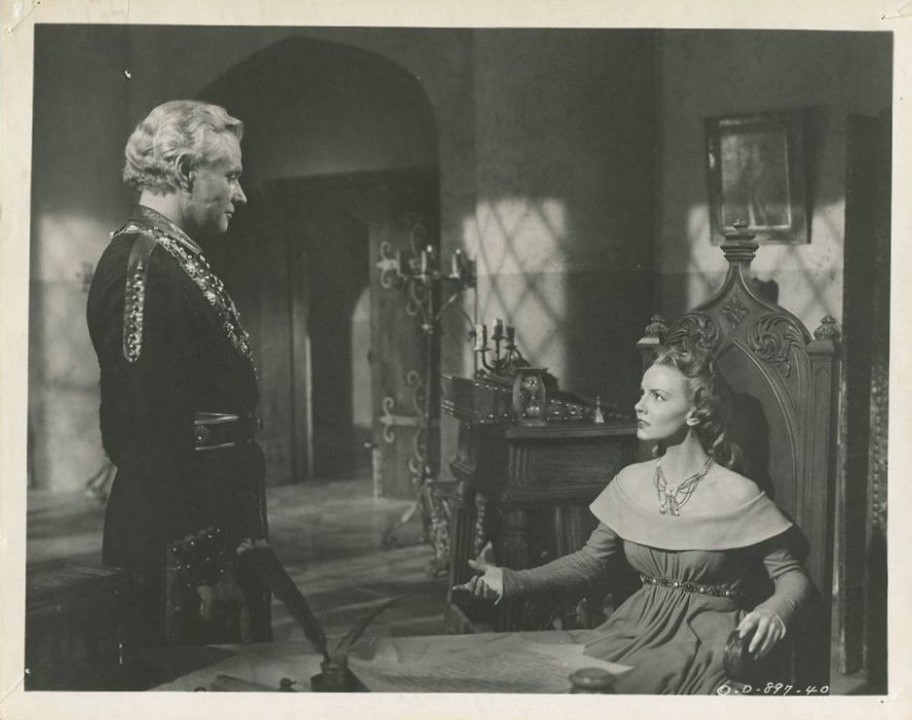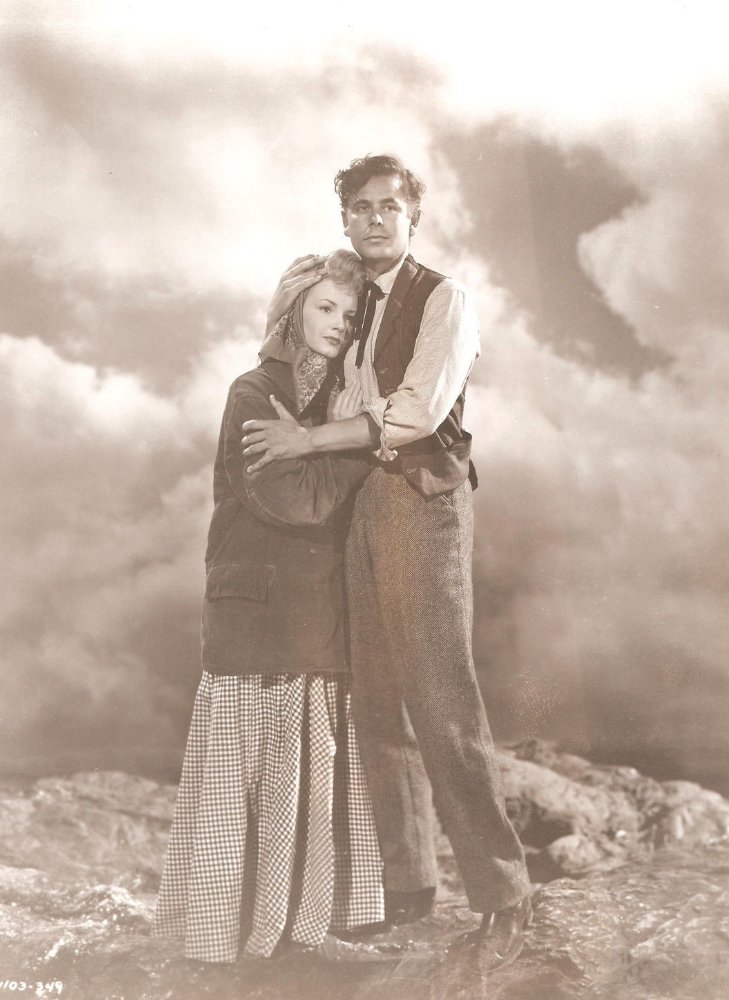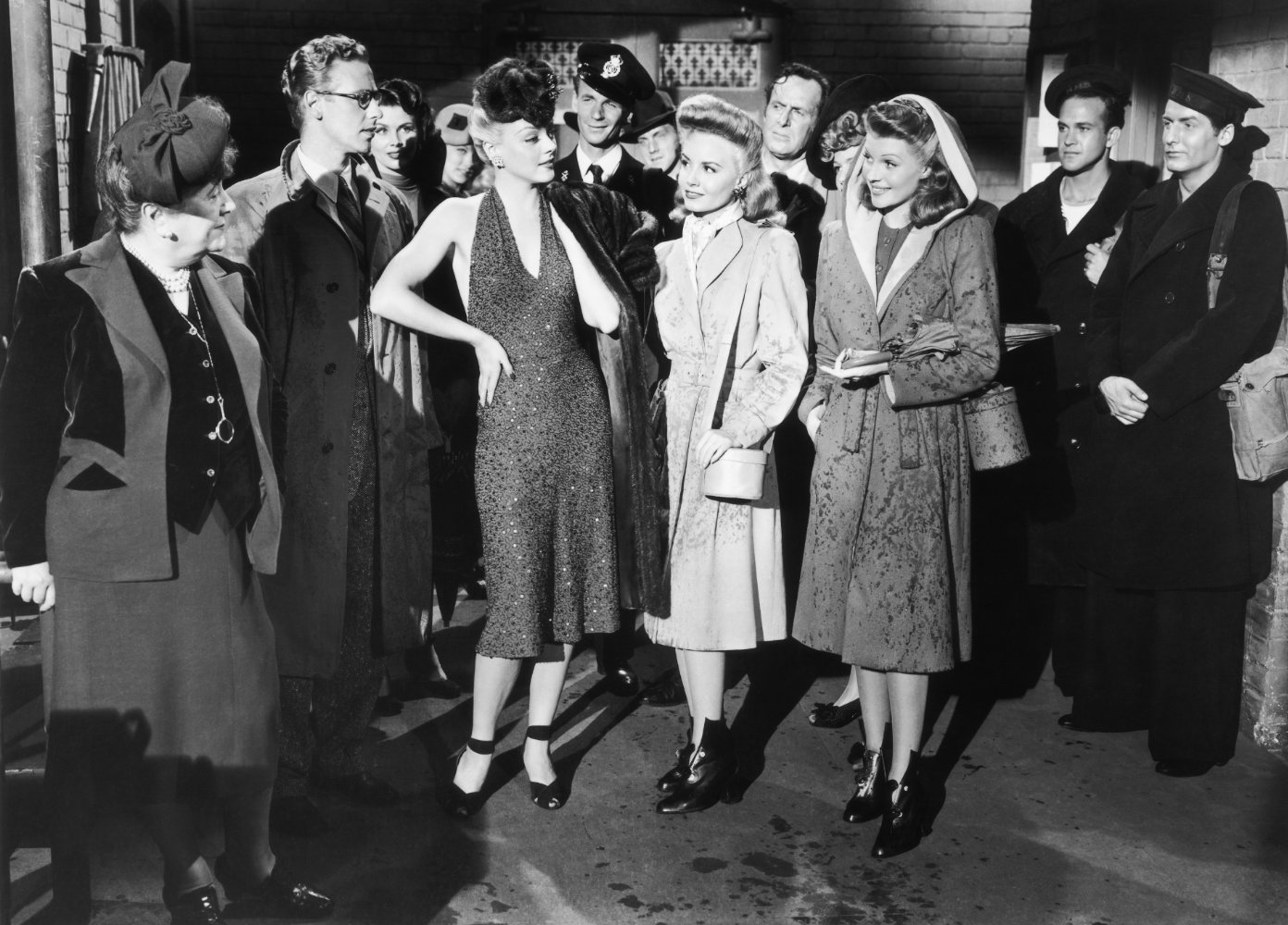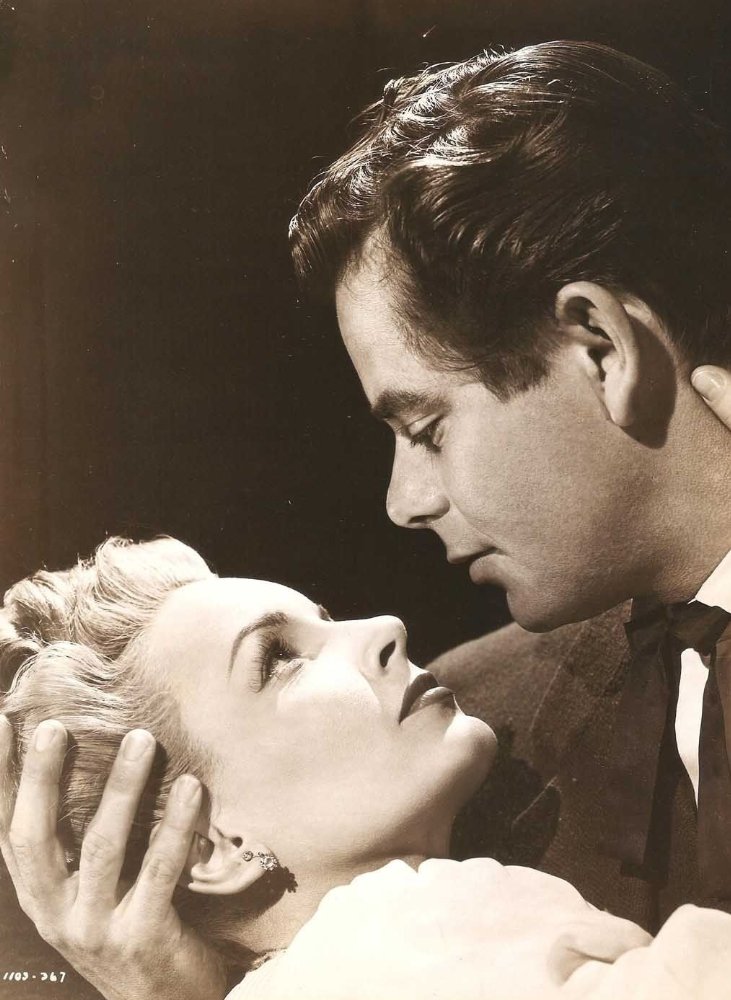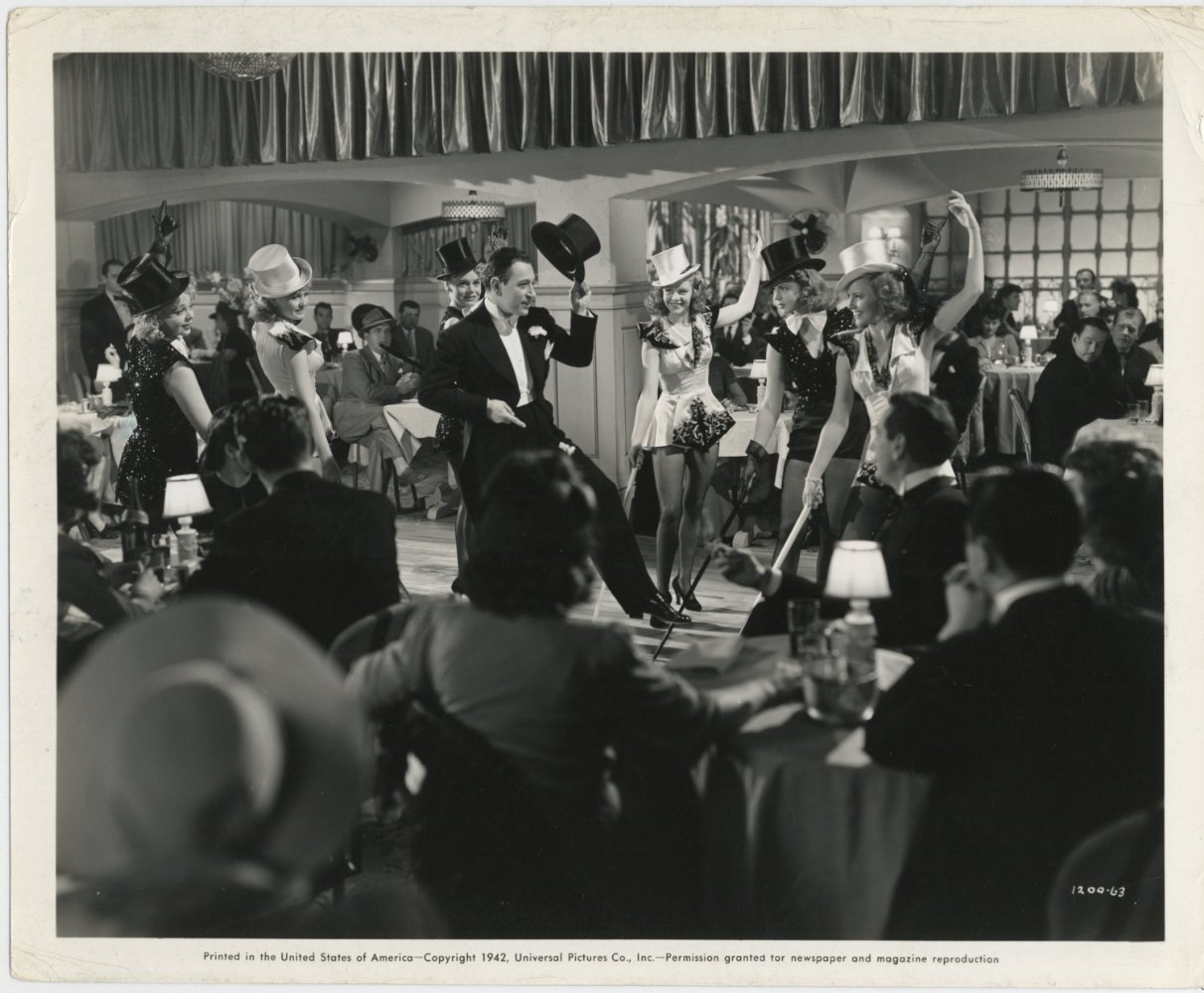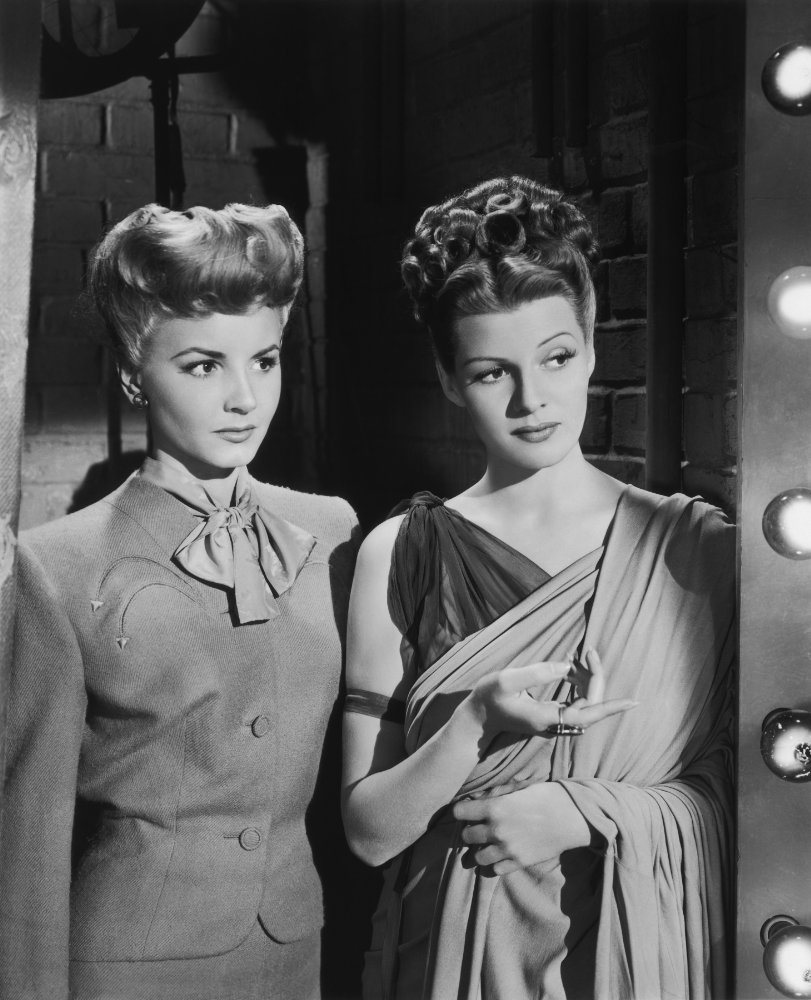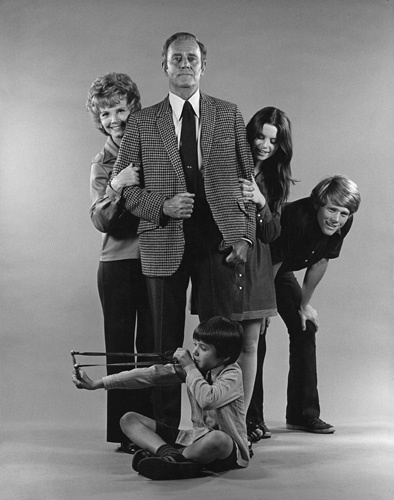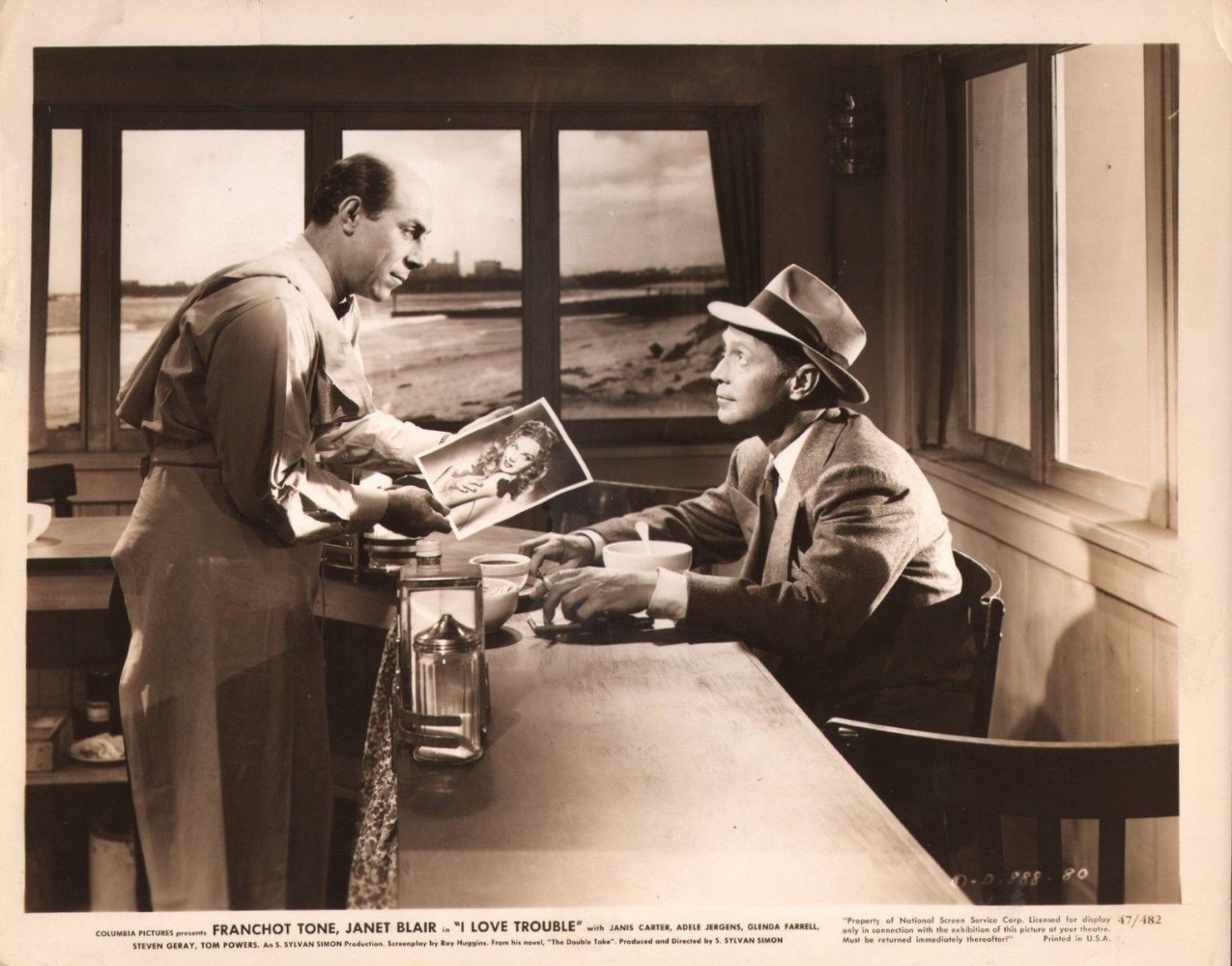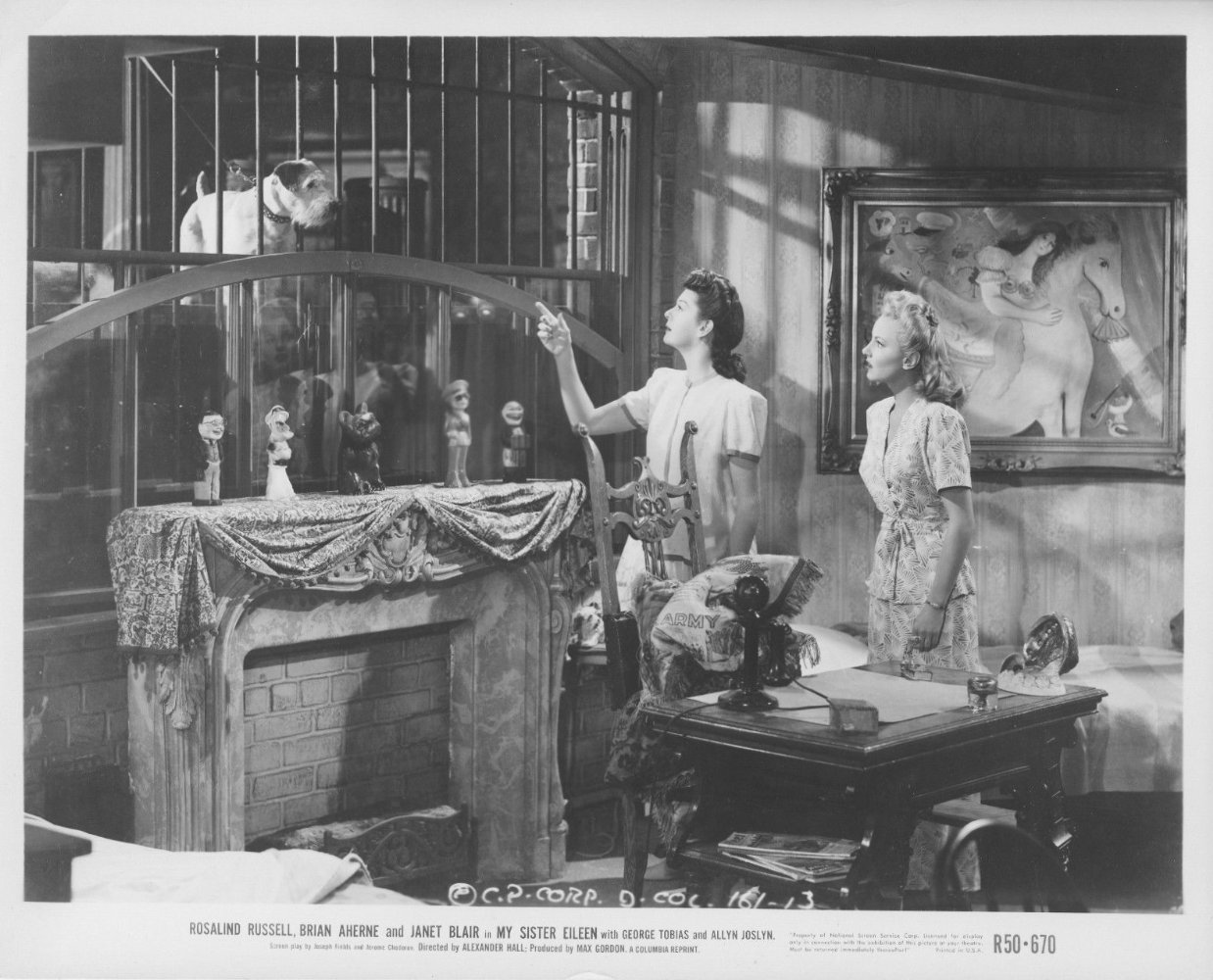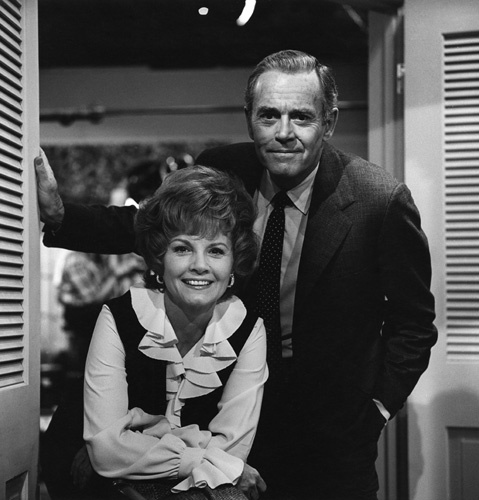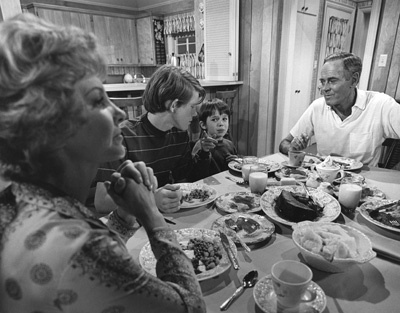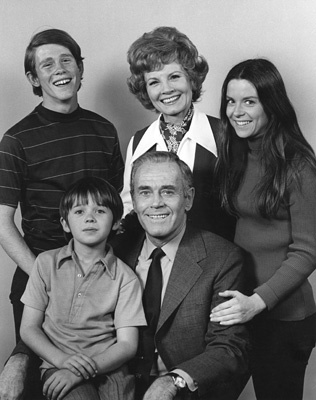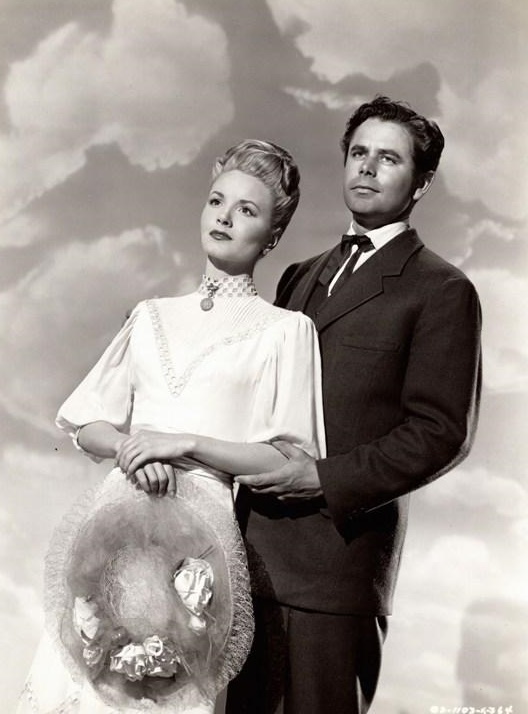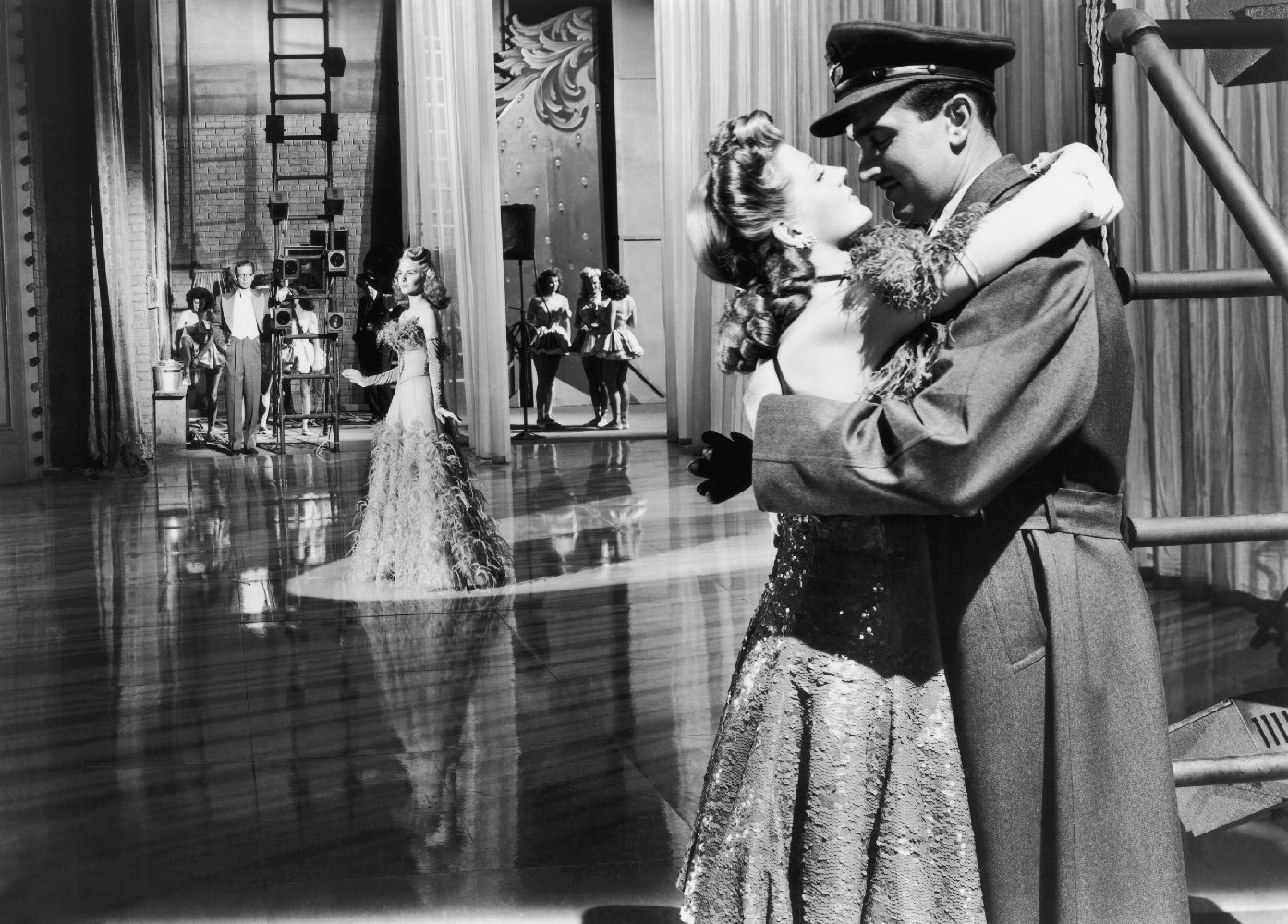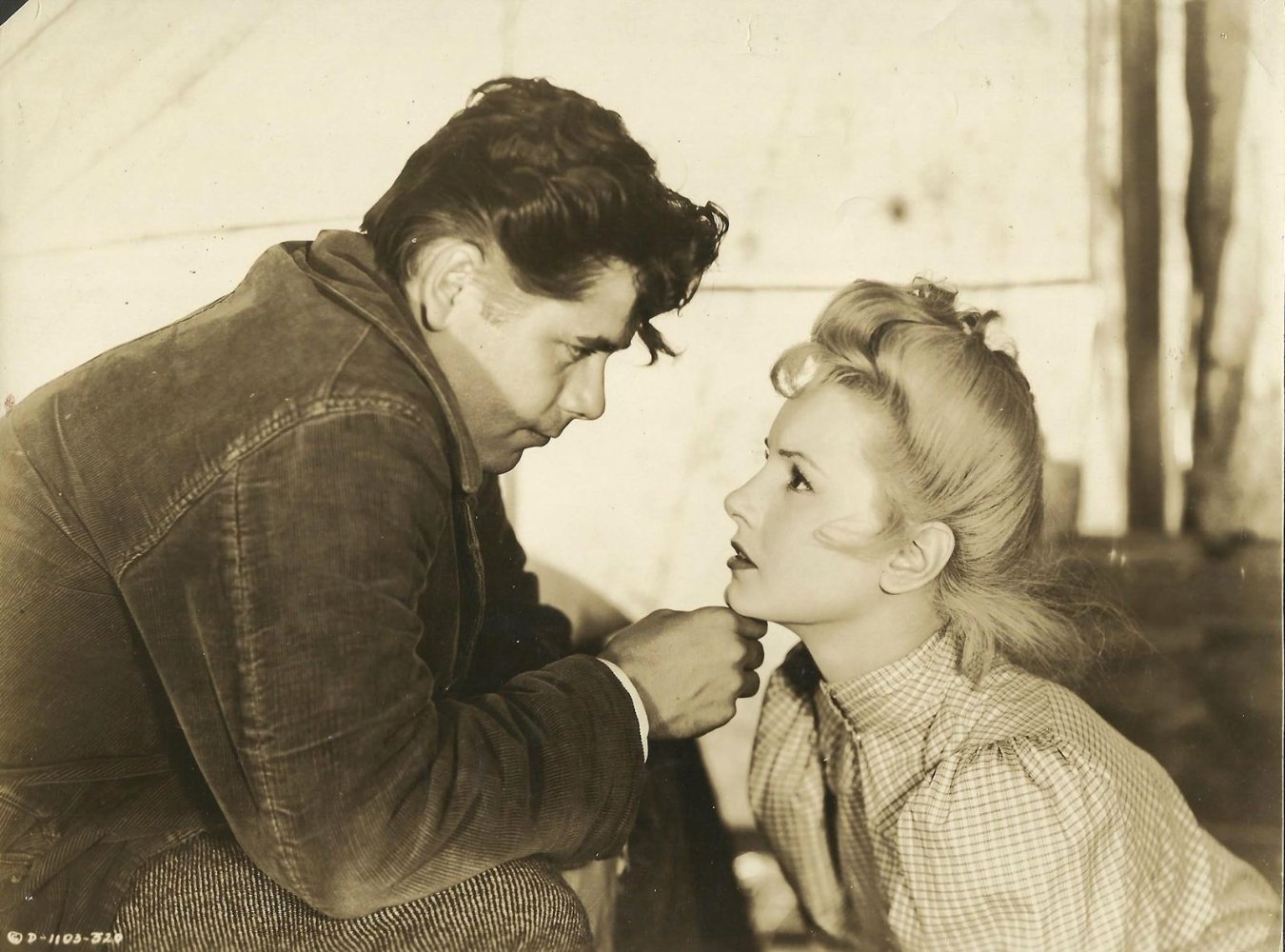When it came to bright and polished, they didn't get much spiffier than singer/actress Janet Blair -- perhaps to her detriment in the long haul. At Columbia, she was usually overlooked for the roles that might have tested her dramatic mettle. Nevertheless, she pleased audiences as a pert and perky co-star to a number of bigger stars, ranging from George Raft and Cary Grant to Red Skelton and The Dorsey Brothers.Of Irish descent, she was born Martha Janet Lafferty in Altoona, Pennsylvania, in 1921. Raised there in the public school system, she sang in the church choir during her youth and adolescence. The inspiration and talent were evident enough for her to pursue singing as a career by the time she graduated. At age 18, she was a lead vocalist with Hal Kemp's band at the Cocoanut Grove in Los Angeles. While with Kemp's outfit, Janet met and, subsequently, married the band's pianist, Lou Busch, a respected musician, songwriter, and, later, ragtime recording artist.A Columbia Pictures talent scout caught her behind the microphone and spotted fine potential in the pretty-as-a-picture songstress. The death of Kemp in a car accident in December of 1940 and the band's eventual break-up signaled a life-changing course of events. She signed up with Columbia, for up to $100 a week, and moved to Los Angeles while her husband found work as a studio musician. Janet made an immediate impression in her debut film as the feisty kid sister of Joan Blondell and Binnie Barnes in Three Girls About Town (1941) and also dallied about in the movies, Two Yanks in Trinidad (1942) and Blondie Goes to College (1942), until her big break in the movies arrived. Star Rosalind Russell made a pitch for Janet to play her co-lead in My Sister Eileen (1942) as her naive, starry-eyed younger sister (Eileen), who carried aspirations of being a big-time actress. The film became an instant hit and Janet abruptly moved up into the "love interest" ranks. Usually appearing in a frothy musical or light comedy, she was seeded second, however, to another redhead, Rita Hayworth, when it came to Columbia's dispensing out musical leads. Janet, nevertheless, continued promisingly paired up with George Raft in the mob-oriented tunefest, Broadway (1942); alongside Don Ameche in the musical, Something to Shout About (1943); and opposite Cary Grant in the comedy-fantasy, Once Upon a Time (1944), one of his lesser known films. She played second lead to Ms. Hayworth in Tonight and Every Night (1945) and was right in her element when asked to co-star with bandleaders Jimmy Dorsey and Tommy Dorsey in their biopic, The Fabulous Dorseys (1947). A rare dramatic role came her way in the Glenn Ford starrer, Gallant Journey (1946), but again she was relegated to playing the stereotyped altruistic wife. In retrospect, the importance of her roles, although performed quite capably, were more supportive and decorative in nature and lacked real bite. By the time the daring-do "B" swashbuckler The Black Arrow (1948) rolled out, Columbia had lost interest in its fair maiden and Janet had lost interest in Hollywood.A new decade brought about a new career direction. Putting together a successful nightclub act, she was spotted by composer Richard Rodgers and made a sparkling name for herself within a short time. Rodgers & Hammerstein's "South Pacific", starring Mary Martin, was the hit of the Broadway season and Janet dutifully took on the lead role of "Ensign Nellie Forbush" when the show went on tour in 1950. She gave a yeoman performance -- over 1,200 in all -- within a three-year period. Following this success, she made her Broadway debut in the musical, "A Girl Can Tell," in 1953. She went on for decades, appearing in such tuneful vehicles as "Anything Goes," "Bells Are Ringing," "Annie Get Your Gun," "Mame," and "Follies."Her career, however, took second place after marrying second husband, producer/director Nick Mayo in 1953, and raising their two children, Amanda and Andrew. The couple met when he stage-managed "South Pacific" and went on to co-own and operate Valley Music Theatre in Woodland Hills, California, during the mid-1960s. There, she played "Maria" in "The Sound of Music" and "Peter Pan" opposite Vincent Price's "Dr. Hook," among others. Her second marriage lasted until the late '60s. TV's "Golden Age" proved to be a viable medium for her. A promising series role came to her in 1956 when she replaced Emmy-winning Nanette Fabray as Sid Caesar's femme co-star on Caesar's Hour (1954) but she left the sketch-based comedy show after only one season because she felt stifled and underused. She also returned to films on occasion, appearing opposite her The Fuller Brush Man (1948) co-star, Red Skelton, in another of his slapstick vehicles, Public Pigeon No. One (1957); as Tony Randall's wife in the domestic comedy, Boys' Night Out (1962), starring Kim Novak; and in the excellent cult British horror, Night of the Eagle (1962) (aka Burn, Witch, Burn) and she was fresh as a daisy, once again, in the antiseptic Disney musical, The One and Only, Genuine, Original Family Band (1968). After her second divorce, Janet laid off touring in musicals and settled in Hollywood to raise her two teenage children while looking for TV work. She found a steady paycheck paired up with Henry Fonda on the sitcom, The Smith Family (1971), playing another of her patented loyal wives. She also found scattered work on such TV shows as Marcus Welby, M.D. (1969), Switch (1975), Fantasy Island (1977), and The Love Boat (1977). Her last guest showing was on the Murder, She Wrote (1984) episode, Murder, She Wrote: Who Killed J.B. Fletcher? (1991). Janet died at age 85 in Santa Monica, California, after developing pneumonia.
Show less «


